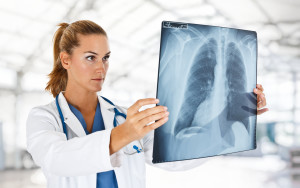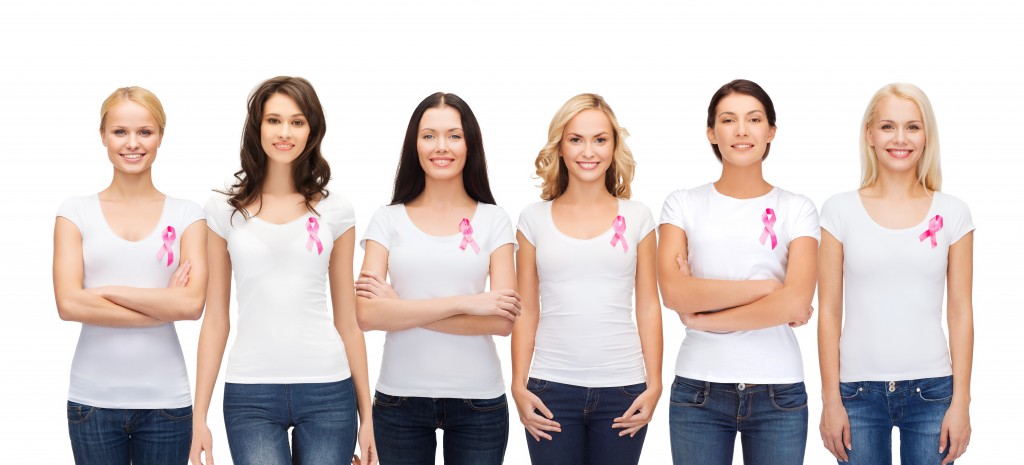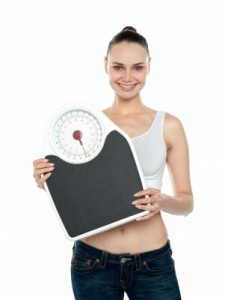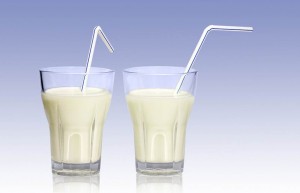 Understanding the signs of depression and anxiety
Understanding the signs of depression and anxiety
You’re having a bad day. Again. You’re feeling anxious and nervous, or even sad and hopeless. Everyone has moments of anxiety or sadness, but how do you know what your intermittent feelings of anxiousness or despondency are more than just a series of bad days? How do you know when you’re facing a more serious health issue and should seek treatment? Read on to learn more about anxiety and depression and their symptoms, and then take our brief questionnaire to determine if you should speak to a health care professional.
Mental illnesses such as anxiety and depression impact men and women differently, and for some women, only appear during pregnancy or the postpartum period. Two of the most common issues that women face are anxiety disorder and depressive disorder.
Anxiety Disorder
There are a variety of diagnosable anxiety disorders, including:
- Generalized anxiety disorder (GAD)
- Obsessive-compulsive disorder (OCD)
- Panic disorder
- Post-traumatic stress disorder (PTSD)
- Social phobia, or social anxiety disorder
It is believed that anxiety disorders can be caused by a variety of factors, including genetics, the environment, psychological factors, and development factors. Unlike the mild levels of nervousness that many people experience when faced with a finite stressful experience, anxiety disorders typically last at least 6 months, with symptoms escalating if untreated. Each anxiety disorder has different symptoms, but all are predicated upon an excessive, irrational fear and dread
Depressive Disorders
Depressive disorders are a more extreme, and interruptive form of the sadness that individuals can experience from time to time. When an individual suffers from depressive disorder, it can interfere with day-to-day functioning. Like anxiety disorder, depressive disorder comes in many forms that span the severity continuum including:<
- Minor depression
- Dysthymic disorder
- Major depressive disorder
- Psychotic depression
- Season affective disorder (SAD)
- Bipolar disorder
Scientists believe that depressive disorders are caused by genetic, biological, chemical, hormonal, environmental, psychological, and social factors. While signs and symptoms vary depending on the diagnosed condition, in general, symptoms of depressive disorder may include:
- Persistent sad, “empty” feelings
- Feelings of hopelessness and/or pessimism
- Feelings of guilt, worthlessness and/or helplessness
- Loss of interest in activities or hobbies
- Fatigue or decreased energy
- Difficulty concentrating
- Insomnia or excessive sleeping
- Overeating or appetite loss
- Suicidal ideation or attempted suicide
- Physical pain in the form of persistent aches or pains, headaches, cramps or digestive problems
If you feel that you are experiencing something more than occasional nervousness or despondency and that you may be suffering from anxiety or depressive disorder, complete the questionnaire below.
In the past month, have you (check all that apply):
Experienced repeated feelings of hopelessness or emptiness?
Experienced severe and unexplainable mood swings?
Felt like you are constantly worried about things you cannot control?
Worried about the amount of alcohol you consume on a daily or weekly basis?
Felt more than twice a week like you have little interest in activities, hobbies, work, friends or family?
Had difficulty sleeping more than twice per week?
Felt like you have no energy on most days?
Felt like you are worthless, a failure, or have let down your family, friends, or co-workers?
Had trouble concentrating or remembering details on a daily basis?
Felt like the world would be better off without you, or considered suicide?
If you checked 3 or more of the statements above, make an appointment to speak with your health care provider today. There are many available treatments for mental health disorders, and your physician can properly diagnose your condition and help you find a treatment plan that will work best for you.
Drs. Chouchani, Sayegh and Bagnarello are concerned for the overall health of our patients. We can recommend options and specialists to help you overcome anxiety and/or depression.
More
 Lung Cancer is The Number One Cancer Killer of Women
Lung Cancer is The Number One Cancer Killer of Women
Every year, cancer claims the lives of over a quarter of a million women. Of all types of cancer, lung cancer is the number one killer of women, having surpassed breast cancer in 1987. Women of all ages should familiarize themselves with the causes and risk factors of lung cancer. With proper education, routine screenings, and a healthy lifestyle, women can reduce their risk of falling victim this deadly disease.
According to The American Lung Association, the rate of new lung cancer cases over the past 37 years has dropped 28 percent for men, but has risen 98 percent for women. Smoking contributes to 80 percent of lung cancer deaths in women. Cigarette smoke specifically causes the greatest lung cancer risk, and though the risk is not as high, pipe and cigar smoke exposure can also increase the risk of lung cancer. Women who smoke are 13 times more likely to develop lung cancer compared to women who have never smoked, with the risk of lung cancer increasing with every cigarette smoked over time.
There is a misconception that all lung-cancer cases are the result of smoking, but in reality one in five women diagnosed with lung cancer has never smoked. However, one of the greatest risk factors of lung cancer for non-smokers is exposure to second-hand smoke. Non-smokers have a 20-30 percent greater chance of developing lung cancer if they are exposed to secondhand smoke at home or work. Still, there are other non-tobacco related factors that can increase the risk of developing lung cancer.
Studies point to genetics, the presence of certain lung diseases such as chronic obstructive pulmonary disease (COPD), environmental factors such as air pollution, and exposure to hazardous materials such as radon, uranium, arsenic, nickel and chemicals like asbestos, as non-tobacco risk factors for developing lung cancer. Regardless of whether they smoke, women should know the signs of lung cancer and should make an appointment for a screening if they suspect their symptoms may be indicative of a serious condition. Lung cancer symptoms may include coughing, wheezing, shortness of breath, and bloody mucus.
The most important step that a woman can take to reduce her risk of lung cancer is to stop smoking. Once a woman has stopped smoking, her risk of developing lung cancer decreases annually as normal lung cells grow and replace damaged cells. Approximately 15 years after quitting, a woman’s risk of developing lung cancer will more closely mirror that of a life-long non-smoker. For those who are non-smokers, but are exposed to tobacco smoke from a family member or from a work environment, minimizing exposure to second hand smoke can help mitigate the risk of contracting the disease. If you think that your home or work environment may be exposing you to asbestos or radon gas, have your environment tested right away.
Living smoke-free, and maintaining a safe home and work environment free from hazardous materials, and knowing the signs and symptoms of the disease, are important steps to staying cancer-free. With proper preventive measures and early detection, women can reduce their risk of lung and other types of cancer.
At Western New York OBGYN we are committed to your health and well-being. If you are looking for a top OBGYN practice and live in the Buffalo area, give us a call, we are accepting new patients.
More
 After giving birth, you may get the “baby blues” for a week or two. You might experience mood swings, feelings of ambivalence toward motherhood, mild depression, and the tendency to burst into tears for no apparent reason. This stage is probably a result of hormonal changes, the isolation new mothers often feel, residual discomfort or pain, and most certainly lack of sleep! But some women, up to 1 in 7, experience a much more serious mood disorder—postpartum depression (PPD).
After giving birth, you may get the “baby blues” for a week or two. You might experience mood swings, feelings of ambivalence toward motherhood, mild depression, and the tendency to burst into tears for no apparent reason. This stage is probably a result of hormonal changes, the isolation new mothers often feel, residual discomfort or pain, and most certainly lack of sleep! But some women, up to 1 in 7, experience a much more serious mood disorder—postpartum depression (PPD).
Unlike the baby blues, PPD doesn’t go away on its own. It can appear any time, even months, after delivering a baby, and it can last for many weeks or months if left untreated. PPD can affect your ability to take care of your baby, or yourself, or both. And PPD can affect any woman, regardless of health, experience, marital status, income, age, race or ethnicity, culture or education.
What are the warning signs of PPD?
The top 10 signs of postpartum depression include:
- Change in appetite, either an increase or a decrease.
- Change in sleep, whether you can’t fall asleep or stay asleep, or you want to sleep all the time.
- Anxiety, agitation or irritability, including worrying constantly about your baby or being fearful of leaving the house or visiting public places.
- Decrease in energy, concentration, or ability to accomplish tasks. This can include having trouble getting up, out of bed, and going in the morning.
- Loss of interest in activities that you once enjoyed.
- Feelings of guilt or worthlessness, or worrying that you’re not a good parent.
- Inability to care for yourself or your baby.
- Complete lack of libido.
- Negative feelings towards or disinterest in your baby.
- Thoughts of harming yourself or your baby.
If you have any thoughts of harming yourself or your baby, DO NOT WAIT! Contact your healthcare provider IMMEDIATELY!
If you experience one or more of the other signs and symptoms of postpartum depression for two weeks or more, it is time to seek additional help from your obstetrician, midwife, primary healthcare provider or a therapist or social worker
You may need counseling, medication or both. Don’t be embarrassed to seek help! You are not alone, and you are not the only one to have the feelings you’re experiencing.
The doctors at Chouchani, Sayegh and Bagnarello care for our patients before, during and after pregnancy. Your health (including your mental health) is a priority for a happy mom and baby.
More

According to the National Breast Cancer Foundation, one in eight women will be diagnosed with breast cancer during their lifetime. However, a diagnosis is not the end – there is hope and there is help.
There are many resources available for people who have been diagnosed with breast cancer, accessible via Internet, phone and some print publications.
Beyond the Shock, sponsored by the National Breast Cancer Foundation, is a free, online guide to understanding breast cancer and its treatment options. BtS can be used as a tool for those diagnosed with breast cancer, loved ones looking for more information or doctors seeking to share information and resources with patients and family members.
Beyond the shock offers educational videos, an open forum for asking questions about breast cancer and receiving answers, and stories from breast cancer survivors. It’s currently available in multiple languages (French, Spanish, Mandarin and Portuguese) and can also be downloaded as an app for smartphones and tablets.
Roswell Park Cancer Institute offers resources through the Western New York Breast Resource Center where team members aid patients and loved ones seeking information about breast cancer diagnosis, treatment and more. RPCI offers a lending library with print and video resources about current breast cancer information, screening techniques, prevention, diagnosis and treatment.
The center also offers services to help patients transition into “cancer survivorship,” as well as offering services to help during treatment.
WNYBRC programs include:
- Chemotherapy clinic tours
- Free wigs, scarves and hats for patients experiencing hair loss due to chemotherapy
- Look Good Feel Better makeover programs sponsored by the American Cancer Society
- Referrals to breast prosthesis and undergarment fitters
- Information and referrals to local support groups, financial assistance programs and transport services
- Information on other community support services
- Referrals to national breast cancer advocacy programs
For more information, hours and locations visit the WNYBRC website.
The Susan G. Komen foundation offers resources for people diagnosed with breast cancer, family members of patients and offers a place for survivors to tell their stories of struggle and recovery. The website offers information, support and a mission statement promising aid to whoever needs it, regardless of what stage they’ve reached with diagnosis, treatment or survival.
The SGK foundation also offers information about their fundraising events, financial assistance information and places to donate for research and recovery.
WebMD offers information on breast cancer symptoms, treatment, research and support. While providing some information, WebMD has also compiled a list of links and resources from other cancer-care networks such as the National Comprehensive Cancer Network, National Breast Cancer Coalition, American Cancer Society and more.
The Breast Cancer Care Foundation also provides a comprehensive list of financial resources for families and patients dealing with cancer diagnosis and treatment.
Breast cancer diagnosis and treatment is a difficult journey, but with resources and support, things can be made easier. For more information about breast cancer research, diagnosis etc. visit our patient education section.
More
 It’s important for women to achieve and maintain a healthy weight, to prevent related medical issues. But what if you’re not at a healthy weight? How can you get there without resorting to dietary fads and potentially dangerous supplements?
It’s important for women to achieve and maintain a healthy weight, to prevent related medical issues. But what if you’re not at a healthy weight? How can you get there without resorting to dietary fads and potentially dangerous supplements?
Losing weight boils down to two things: eating less and moving more. The combination of cutting calories and increasing activity is the only proven way to drop the pounds. Best of all? It’s easy if you know how. Here are 8 simple tips that will help you cut or burn extra calories and lose about a pound of weight a week—without feeling deprived or obsessing about calorie counting.
- Make Smart Food Swaps. If you trade in your morning bagel for an English muffin, you’ll slash 220 calories. Using one whole egg and two egg whites to make an omelet and switching pork sausage for turkey sausage will cut about 125 calories each for a protein-packed breakfast.
- Know How Many Portions You Eat. When you check the calorie count on an item, check the portion size also. Something may be 100 calories a portion, but you may be eating 5 portions at a time. Taking the time to measure out one serving can save you hundreds of calories.
- Make Sure To Move. Do you take a lunch hour? Just taking a walk every day for an hour can burn up to 500 extra calories. Or try wearing a pedometer and aim for walking 10,000 steps a day—the equivalent of about 5 miles—and you’ll burn those calories without hitting the gym.
- Surprise Your Tastebuds. Having a sandwich? Use hummus or mustard instead of mayonnaise, and substitute a roll for sliced bread, and you’ll cut about 200 calories. If you order a side, opt for a salad instead of fries to save another 300 calories and fill up on fiber.
- Fool Your Eyes. If you downsize your plate, such as going from a 12-inch to a 9-inch, you’ll cut 500 calories without feeling deprived.
- Stand Up For Yourself. You can burn up to an extra 500 calories a day by standing, rather than sitting, whenever possible! At work, try standing to make a phone call or read a report.
- Drink Water. Drink plenty of water, especially in place of soda or other sugary drinks, which can save you about 300 hundred calories a day if you skip two cans. Also, drinking enough water daily might boost your metabolism so you burn even more calories. Is plain water too boring? Add sliced cucumbers, lemon or limes, or even low-calorie flavor packets.
- Get Enough Sleep. This can be tough, especially for moms, but people who get less than 6 hours of sleep eat up to 300 calories more during the day because that lack of sleep triggers production of your hunger hormone. Each extra hour of sleep could save you 100 calories!
Call Chouchani, Sayegh and Bagnarello if you’d like to work with doctors who truly care about the overall health of our patients.
More
By admin
13 Jan, 2014
Pregnancy, Women's Health
calcium when pregnant, Dr. Adel Chouchani, Dr. Carola Bagnarello, Dr. Christian Chouchani, Dr. Gabriel Chouchani, Dr. Magdi Sayegh, how much calcium do I need, WNY OB-GYN, women and calcium, women's calcium intake
 Calcium is the most abundant mineral in your body, but you also lose it every day through your skin, nails, hair, sweat, urine and feces—and our bodies cannot produce new calcium on their own. If you don’t get enough for your body’s needs, calcium is taken from your bones, causing osteoporosis.
Calcium is the most abundant mineral in your body, but you also lose it every day through your skin, nails, hair, sweat, urine and feces—and our bodies cannot produce new calcium on their own. If you don’t get enough for your body’s needs, calcium is taken from your bones, causing osteoporosis.
Calcium plays many vital roles in your body, including:
- building healthy bones and teeth and keeping them strong as you age,
- sending messages through the nervous system,
- maintaining healthy blood vessels,
- regulating blood pressure,
- preventing insulin resistance (which could lead to Type 2 diabetes),
- helping your blood clot, and
- regulating your heart’s rhythm.
Obviously, if you want to enjoy good health, you need to make sure you have enough calcium in your diet. And once you understand the basics, it’s not that hard to include it in your diet and get the calcium you need.
Supplements vs. Food
Your body can absorb more calcium from food than it can from supplements, so your calcium intake should come primarily from the food you eat. People who get most of their calcium from food have stronger bones.
Calcium from food often comes with other beneficial nutrients that help calcium do its job, like Vitamin D.
Doctors advise that you get as much of your daily calcium needs from food as possible and use supplements only to make up any shortfall. Older women who get high amounts of calcium from supplements seem to have a higher risk of kidney stones and strokes. And using high-dose calcium supplements may increase your risk of heart disease.
How much calcium is right for you?
The healthiest or safest amount of dietary calcium hasn’t been definitively established. Different scientific approaches have yielded different estimates. To ensure that 95 percent of the population gets this much calcium, the National Academy of Sciences established the following recommended intake levels:
- Age 19 to 50: 1,000 milligrams/day
- Age 50 or over: 1,200 milligrams/day
- Pregnant or lactating adult women 1,000 milligrams/day
Good food sources of calcium
So what foods can you eat to get enough calcium in your diet? You probably know about dairy products, like milk, yogurt, and cheese, but here are some unexpected sources:
- White Beans
- Canned Salmon
- Sardines
- Dried Figs
- Bok Choy
- Blackstrap Molasses
- Kale
- Black-eyed Peas
- Almonds
- Oranges
- Turnip Greens
- Sesame Seeds
- Seaweed
At Chouchani, Sayegh and Bagnarello, we believe in supporting the total health of our patients and our community. If you have any questions about your dietary or nutritional needs, we’d be happy to help. Contact us anytime at any of our three convenient WNY locations.
More
By admin
23 Dec, 2013
Breastfeeding support, Pregnancy
breastfeeding classes Buffalo, breastfeeding classes Western New York, breastfeeding support WNY, Dr. Carola Bagnarello, Dr. Christian Chouchani, Dr. Gabriel Chouchani, Dr. Magdi Sayegh, lactation consultants Buffalo, lactation consultants Western New York, nursing support WNY, WNY OB-GYN
 Everyone thinks that because breastfeeding is natural, that it’s easy. But experienced nursing moms can tell you—it’s not always! If you’re planning to breastfeed, you’re probably going to need some support. Where are your best resources in Western New York?
Everyone thinks that because breastfeeding is natural, that it’s easy. But experienced nursing moms can tell you—it’s not always! If you’re planning to breastfeed, you’re probably going to need some support. Where are your best resources in Western New York?
At the Hospital
When you give birth at Mercy Hospital, Millard Fillmore Suburban, Women and Children’s Hospital of Buffalo or Sisters Hospital, you can expect to receive support from an onsite lactation consultant. Be sure to tell the staff when you arrive that you plan to breastfeed after your baby is born, so they can help you get started correctly, right away.
Most of these facilities also offer breastfeeding classes as part of their preparation courses for new parents-to-be. These classes are taught by experienced, internationally board certified lactation consultants and are designed to help answer common questions and concerns that you may experience during pregnancy. They should prepare you for both the initial breastfeeding experience and what to expect during the first few weeks at home.
At Home
However, we all know that what works one day might not work the next. If you were doing well with breastfeeding at the hospital but things don’t seem to be going right now, or if you just want some reassurance, both Sisters and Mercy hospitals have the Baby Café, a weekly drop-in center where you can get support and guidance from certified lactation consultant nurses.
You can also ask your child’s pediatrician if they have a lactation consultant on staff. Care Connections, a lactation center located in Amherst that serves all eight counties of WNY, provides lactation consultant services for over 35 local pediatricians.
Care Connections also offers home visits by their IBC-certified lactation consultants in addition to onsite breastfeeding consultations. And if you can make the drive to their Amherst location, they rent breast pumps and sell a variety of clothing and accessories designed to make your breastfeeding experience easier.
At Work
If you’ll be returning to work and plan to continue nursing, Millard Fillmore Suburban offers a special class called Breastfeeding and the Working Mother, which will help you prepare to return to work by teaching you to use your breast pump and store your breast milk.
And if you have a question in the middle of the night, there are several great websites out there full of helpful information. Try:
At Chouchani, Sayegh and Bagnarello, MD, we strive to prepare and support all of our patients who want to breastfeed to have a successful experience. In fact, we want any woman who wants to breastfeed to have a successful experience! Please contact us if you have any questions. Our team is here for you before, during and after your pregnancy.
More
By admin
15 Dec, 2013
Breast health, Women's Health
breast self-exam, check your breasts every month, Dr. Adel Chouchani, Dr. Carola Bagnarello, Dr. Christian Chouchani, Dr. Gabriel Chouchani, Dr. Magdi Sayegh, is breast self-exam important?, the benefits of breast self-exam, WNY OB-GYN
 You probably mean to do your breast self-exam (BSE) every month, but it often slips your mind, right? Or maybe you’ve heard that some people don’t think BSE is helpful in detecting breast cancer early and increasing the likelihood of survival. But experts still believe that BSE is a useful and essential screening strategy, especially in conjunction with regular physical exams by a doctor and mammography. Why?
You probably mean to do your breast self-exam (BSE) every month, but it often slips your mind, right? Or maybe you’ve heard that some people don’t think BSE is helpful in detecting breast cancer early and increasing the likelihood of survival. But experts still believe that BSE is a useful and essential screening strategy, especially in conjunction with regular physical exams by a doctor and mammography. Why?
Sure, there are statistics that say things like:
- About 20% of the time, breast cancers are found by physical examination rather than by mammography
- Nine out of 10 breast masses are detected through BSE.
But put aside the numbers and the science. The point is, in order to keep yourself healthy, you need to know your body better than anyone else! And being proactive with your health means doing whatever you can to lower your chances of developing breast cancer—which includes making sure that if breast cancer does develop it is caught early, in a treatable stage. With early detection and treatment, the five-year survival rate for breast cancer soars to more than 90%. Plus, performing your monthly BSE will help to determine what is normal for your breasts, and help you recognize a change.
The experience can be frustrating—for example, you may feel things but not know what they mean. But the more often you do it, the more you’ll learn about your own breasts and what’s normal for them, and the easier it will be for you to tell if something different or unusual is going on.
Perform your BSE 6 days after your period or on the first day of the month, if you no longer have periods. Remember that everyone’s breasts are different, and that any changes you see or feel can be related to aging, your menstrual cycle, pregnancy, menopause or hormone use. Regular BSE will help to identify changes that require further evaluation and possible treatment.
What should you look for?
- Lumps, hard knots or thickening in the breast or underarm area
- Unusual swelling, warmth, redness or darkening that does not go away
- Change in the size or shape of your breast
- Dimpling or puckering of the skin
- An itch, scaly sore or rash on the nipple
- Pulling in of the nipple or other parts of the breast
- Nipple discharge that starts suddenly or is bloody
- Pain that is localized in one area and that does not vary with your monthly cycle
Nobody wants to think about getting cancer. But the fact is, taking the time to check yourself out is your best defense when it comes to caring for your health. If you have any questions about how to perform your BSE, ask your doctor – or call Chouchani, Sayegh and Bagnarello, MD. We’d be happy to offer any help you need.
Photo courtesy of freedigitalphotos.net.
More
By admin
13 Dec, 2013
Women's Health
Dr. Adel Chouchani, Dr. Carola Bagnarello, Dr. Christian Chouchani, Dr. Gabriel Chouchani, Dr. Magdi Sayegh, how to avoid the winter blues, Vitamin D supplements in the winter, why Vitamin D supplements are important, winter blues in Western New York, WNY OB-GYN, women's health tips
 Medical professionals have known for decades that everyone’s vitamin D levels drop in the wintertime, especially those who live in the northern part of the country. Why is it a problem? Because vitamin D deficiency is connected with several health issues, especially anxiety and depression, and you may need to take extra action to keep your vitamin D levels high enough, and steady.
Medical professionals have known for decades that everyone’s vitamin D levels drop in the wintertime, especially those who live in the northern part of the country. Why is it a problem? Because vitamin D deficiency is connected with several health issues, especially anxiety and depression, and you may need to take extra action to keep your vitamin D levels high enough, and steady.
Vitamin D helps your body use calcium to build and maintain strong bones. It may also increase muscle strength to help prevent falls and broken bones as you age. And low levels of vitamin D have been linked with high blood pressure, diabetes, hypothyroidism, arthritis, and cancer.
Then there’s seasonal affective disorder (SAD), a type of depression that occurs during the winter months, when there’s not much sunlight. Vitamin D deficiency can actually cause depression year-round.
Why is it so hard to get enough vitamin D in the winter? Mostly because of the lack of sun.
Your body gets vitamin D from three places: sunlight, food and supplements. Your body makes Vitamin D when your skin is exposed to the ultraviolet light (UVB rays) from the sun. During Western New York’s snowy, often overcast winter days, you won’t get enough UVB rays to make enough vitamin D. And the foods where vitamin D is found—cod liver oil, fatty fish like salmon, mackerel, sardines, herring and tuna and eggs—are often high in fat and low in popularity. It’s no wonder most of us need to supplement!
How much should you take? If your doctor has tested your vitamin D levels and found them to be too low, he or she may prescribe a very high level supplement to be taken for a short period of time. After that time, a maintenance dose should suffice.
It’s been proven that women who take supplements in winter are able to significantly elevate their vitamin D levels compared to those who don’t take supplements. It’s yet another way you can take care of yourself and your health, something that the doctors at Chouchani, Sayegh and Bagnarello encourage. Please make an appointment with us if you have any health concerns you feel we can help you with!
More
Robotic Hysterectomy might sound a little like something out of a science fiction movie, but in reality it’s a cutting edge, minimally invasive procedure, that is at the forefront of gynecology.
Did you know that besides the C-Section, the second most performed surgery on women in this country is the hysterectomy – or the removal of the uterus?
What are the most common reasons why a woman would need a hysterectomy?
Here are a few of the most common reasons…
- Benign fibroid tumors
- Cancerous tumors
- Uterine prolapse
- Endometriosis
- Long-term abnormal uterine bleeding
- Chronic pelvic pain
Why robotic?
Benefits of the robotic-assisted laparoscopic hysterectomy include:
- Smaller incisions, and as a result smaller scars.
- Less pain and a shorter hospital stay after surgery.
- An easier and possibly shorter recovery at home.
Are there any risks?
As, with any surgery, there are always risks involved. Your physician will determine if the benefits of the surgery outweigh complications that may arise. Although this is a relatively safe procedure, some risks include:
- Reaction to the anesthesia
- Infection
- Bleeding
- Damage to other organs inside the abdomen
- Blood clots that form in your legs and may travel to your lungs
At Chouchani, Sayegh and Bagnarello we perform the Robotic Hysterectomy with the da Vinci®Surgical System. Using this cutting edge technology, we are able to dramatically decrease pain and speed up the recovery process. Through tiny, 1-2 cm incisions, our surgeons using the da Vinci System can operate with greater precision and control, minimizing the pain and risk associated with large incisions while increasing the likelihood of a fast recovery and excellent clinical outcomes.
Are you a candidate for this type of surgery? Find out more about this amazing procedure. Or call our office at (716) 633-6363 for details.
More
 Understanding the signs of depression and anxiety
Understanding the signs of depression and anxiety







